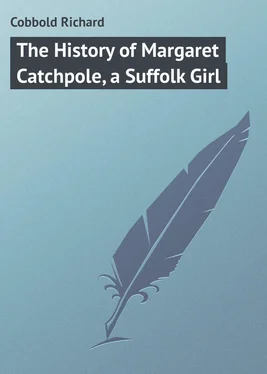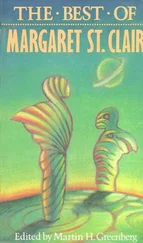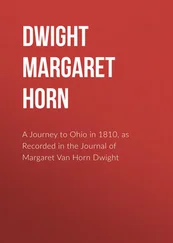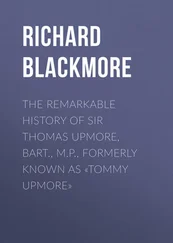Richard Cobbold - The History of Margaret Catchpole, a Suffolk Girl
Здесь есть возможность читать онлайн «Richard Cobbold - The History of Margaret Catchpole, a Suffolk Girl» — ознакомительный отрывок электронной книги совершенно бесплатно, а после прочтения отрывка купить полную версию. В некоторых случаях можно слушать аудио, скачать через торрент в формате fb2 и присутствует краткое содержание. Жанр: foreign_prose, на английском языке. Описание произведения, (предисловие) а так же отзывы посетителей доступны на портале библиотеки ЛибКат.
- Название:The History of Margaret Catchpole, a Suffolk Girl
- Автор:
- Жанр:
- Год:неизвестен
- ISBN:нет данных
- Рейтинг книги:5 / 5. Голосов: 1
-
Избранное:Добавить в избранное
- Отзывы:
-
Ваша оценка:
- 100
- 1
- 2
- 3
- 4
- 5
The History of Margaret Catchpole, a Suffolk Girl: краткое содержание, описание и аннотация
Предлагаем к чтению аннотацию, описание, краткое содержание или предисловие (зависит от того, что написал сам автор книги «The History of Margaret Catchpole, a Suffolk Girl»). Если вы не нашли необходимую информацию о книге — напишите в комментариях, мы постараемся отыскать её.
The History of Margaret Catchpole, a Suffolk Girl — читать онлайн ознакомительный отрывок
Ниже представлен текст книги, разбитый по страницам. Система сохранения места последней прочитанной страницы, позволяет с удобством читать онлайн бесплатно книгу «The History of Margaret Catchpole, a Suffolk Girl», без необходимости каждый раз заново искать на чём Вы остановились. Поставьте закладку, и сможете в любой момент перейти на страницу, на которой закончили чтение.
Интервал:
Закладка:
Cobbold Richard
The History of Margaret Catchpole, a Suffolk Girl
INTRODUCTION
Three personalities interest us in reading the novel of Margaret Catchpole – the author, the heroine, and the author’s mother, in whose service the real Margaret Catchpole was employed. Neither the author nor his mother has been the subject of much biographical effort, although Richard Cobbold was an industrious novelist, poet, and essayist for a long period of years, and wrote this one book that will always, I think, be read. His mother, Elizabeth Cobbold, made some reputation as a writer of verse, and is immortalized for us in Charles Dickens’s Mrs. Leo Hunter. Fortunately we have a sketch of her by one Laetitia Jermyn, dated 1825, and attached to a volume of Poems , published at Ipswich in that year. 1 1 Poems by Mrs. Elizabeth Cobbold, with a Memoir of the Author. Ipswich: Printed and sold by J. Raw in the Butter Market, 1825.
Laetitia Jermyn tells us that Elizabeth’s maiden name was Knipe, and that she was born in Watling Street, London, about 1764, her father being Robert Knipe of Liverpool. In 1787 she published a little volume of verse entitled Six Narrative Poems , which she dedicated to Sir Joshua Reynolds, evidently by permission. It is clear that in girlhood she had made the acquaintance of the great painter. Her biographer says nothing about her being an actress, but it is a tradition in Ipswich that this was for a time her profession. In 1790 she was married at Liverpool to William Clarke, a Portman of the borough and Comptroller of the Customs of Ipswich, who was apparently about sixty years of age and in very delicate health. The sprightly young wife wrote the following lines to her husband on St. Valentine’s Day, soon after their marriage: —
Eliza to William this Valentine sends,
While ev’ry good wish on the present attends;
And freely she writes, undisturb’d by a fear,
Tho’ prudes may look scornful, and libertines sneer.
Tho’ tatlers and tale-bearers smiling may say,
"Your Geniuses always are out of the way,”
Sure none but herself would such levities mix,
With the seriousness suited to grave twenty-six.
A Wife send a Valentine! Lord, what a whim!
And then of all people to send it to him!
Make love to her husband! my stars, how romantic!
The Girl must be certainly foolish or frantic;
But I always have thought so, else what could engage
Her to marry a man who is twice her own age?
While the tabbies are thus on my motives enlarging,
My sentiments William may read in the margin.
On the wings of old Time have three months past away
Since I promis’d ”to honour, to love, and obey,”
And surely my William’s own heart will allow
That my conduct has ne’er disagreed with my vow.
Would health spread her wings round my husband and lord,
To his cheeks could the smiles of delight be restor’d;
The blessing with gratitude I should receive,
As the greatest that Mercy benignant could give;
And heedless of all that conjecture may say,
With praise would remember St. Valentine’s day.
I quote this valentine at length because it is a fair sample of the quality of our poet’s efforts. At the end of the eighteenth century, and far into the nineteenth, a rhyming faculty of this kind was quite sufficient to make a literary reputation in an English provincial town, and in the case of Mrs. Clarke it was followed up by the writing of a novel, The Sword , published at Liverpool in 1791. It is interesting to find the name of Roscoe the historian among the subscribers for this book. In the same year – within six months of her marriage – the writer lost her husband.
The interest of Elizabeth Knipe’s life, however, begins for us when very shortly after this she became the wife of John Cobbold, of the Cliff Brewery, Ipswich. Cobbold was a widower. He had already had sixteen children, of whom fourteen were then living. When it is remembered that by his second wife he had six more children it will be seen that there was a large family, and it is not surprising therefore that the Cobbold name is still very much in evidence in Norfolk and Suffolk, and particularly in Ipswich. “Placed in the bosom of this numerous family”, writes her biographer, “and indulged in the means of gratifying her benevolent and liberal spirit, ‘The Cliff’ became the home of her dearest affections, the residence of taste, and the scene of hospitality.” One need not complain of the lady that she was not very much of a poet, for she had otherwise a versatile character. In addition to being, as we are assured, a good housekeeper, she was, if her self-portraiture be accepted, a worker in many fields: —
A botanist one day, or grave antiquarian,
Next morning a sempstress, or abecedarian;
Now making a frock, and now marring a picture,
Next conning a deep, philosophical lecture;
At night at the play, or assisting to kill
The time of the idlers with whist or quadrille;
In cares or amusements still taking a part,
Though science and friendship are nearest my heart.
Laetitia Jermyn tells us much about her charity and kindness of heart, her zeal in behalf of many movements to help the poor, and she dwells with enthusiasm upon her friend’s literary achievements. 2 2 The three most talked of books by Elizabeth Cobbold were: — The Mince Pye , an Heroic Epistle, humbly addressed to the Sovereign Dainty of a British Feast, by Caroline Petty Pasty, 1800. Cliff Valentines , 1813. An Ode to the Victory of Waterloo , 1815. The suggestion is made in the Dictionary of National Biography that she was descended on the mother’s side from Edmund Waller the poet, but this is exceedingly improbable.
But the scope of this Introduction to her son’s book does not justify devoting more attention to the mother, although her frequent appearance in Margaret Catchpole’s partially true story demands that something be said about her “mistress”. Elizabeth Cobbold died in 1824. Her husband outlived her for eleven years. John Cobbold (1746-1835) traced back his family in the direct line as landowners in Suffolk to a Robert Cobbold, who died in 1603. He was a banker as well as a brewer, and lived first at “The Cliff” and afterwards at “Holywells”, which has ever since been the seat of the head of the family. It was the fourteenth child of his first marriage – Henry Gallant Cobbold – who was saved from drowning by Margaret Catchpole.
It was Richard Cobbold, one of the six sons of the second marriage of John Cobbold, who was the author of this story. When he was born he had ten nephews and nieces awaiting him, the children of his brothers and sisters of the first family, and he was at school with his own nephew, who was just a fortnight younger than himself. The nephew was John Chevallier Cobbold, who for twenty-one years represented Ipswich in Parliament. For this information I am indebted to a grandson 3 3 Dr. Spencer Cobbold, of Batheston, Somerset, a grandson of Richard Cobbold, and the son of T. Spencer Cobbold, M.D. (1828-1886), the distinguished helminthologist, who was the youngest F.R.S. of his day. He had made some original investigations concerning Entozoa, and was the author of many books on “Parasites" and kindred subjects.
, who also sends me the following anecdotes: —
When John Cobbold – the father of twenty-two children – was High Sheriff, he once persuaded the Judge to come to dine with him on condition that there should be no one to meet him except his (J. C.’s) own family. When the Judge was shown into a drawing-room full of people, he was very angry, and said loudly before the company, “Mr. Cobbold, you have deceived me.” Explanations followed, and the Judge was introduced to the various members of the family.
Читать дальшеИнтервал:
Закладка:
Похожие книги на «The History of Margaret Catchpole, a Suffolk Girl»
Представляем Вашему вниманию похожие книги на «The History of Margaret Catchpole, a Suffolk Girl» списком для выбора. Мы отобрали схожую по названию и смыслу литературу в надежде предоставить читателям больше вариантов отыскать новые, интересные, ещё непрочитанные произведения.
Обсуждение, отзывы о книге «The History of Margaret Catchpole, a Suffolk Girl» и просто собственные мнения читателей. Оставьте ваши комментарии, напишите, что Вы думаете о произведении, его смысле или главных героях. Укажите что конкретно понравилось, а что нет, и почему Вы так считаете.












